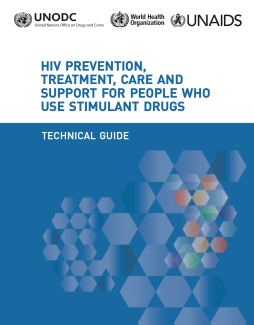HIV Prevention, Treatment, Care and Support for People Who Use Stimulant Drugs

Since the beginning of the HIV epidemic, the focus on HIV prevention, treatment and care among people who use drugs has concentrated on the needs of people who inject drugs, and mainly on those who inject opioids. However, data show that there are HIV-related risks associated with the use of non-injecting stimulant drugs, as well as with the unsafe injection of such drugs, including cocaine, amphetamine-type stimulants (ATS) (excluding MDMA), and stimulant new psychoactive substances (NPS).
The use of stimulant drugs has also been associated with a higher risk of HIV transmission through unsafe sexual behaviours in certain subsets of key populations.
The purpose of this publication is to provide guidance on implementing HIV, hepatitis C (HCV) and hepatitis B (HBV) programmes for people who use stimulant drugs and who are at risk of contracting these viruses. It aims to:
-
Increase awareness of the needs and issues faced by the affected groups, including the intersec- tionality among different key populations
-
Provide implementation guidance to help establish and expand access to core HIV and hepatitis prevention, treatment, care and support services.
The guide is intended for use by policymakers, programme managers and service providers, including community-based organizations, at the national, regional or local levels, who undertake to address HIV prevention, treatment and care. It also provides useful information for development and funding agencies and for academia.